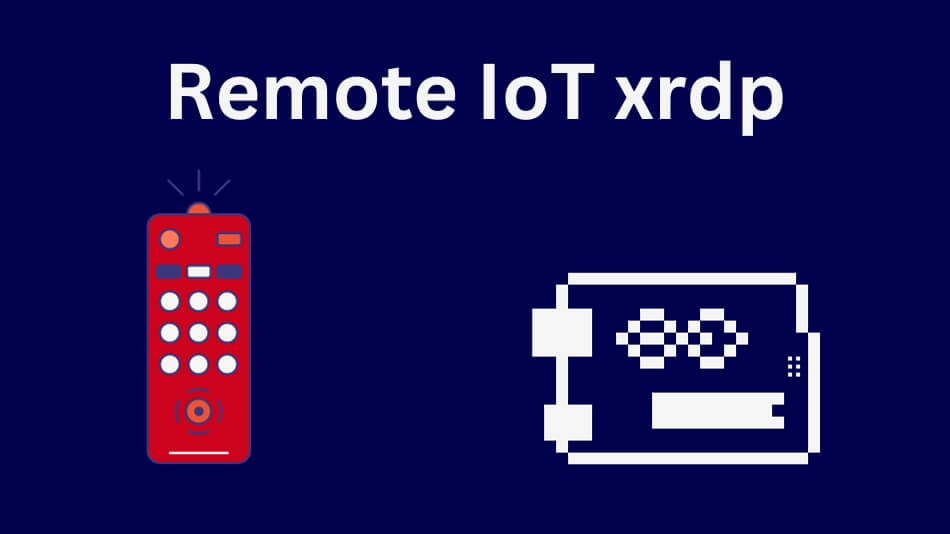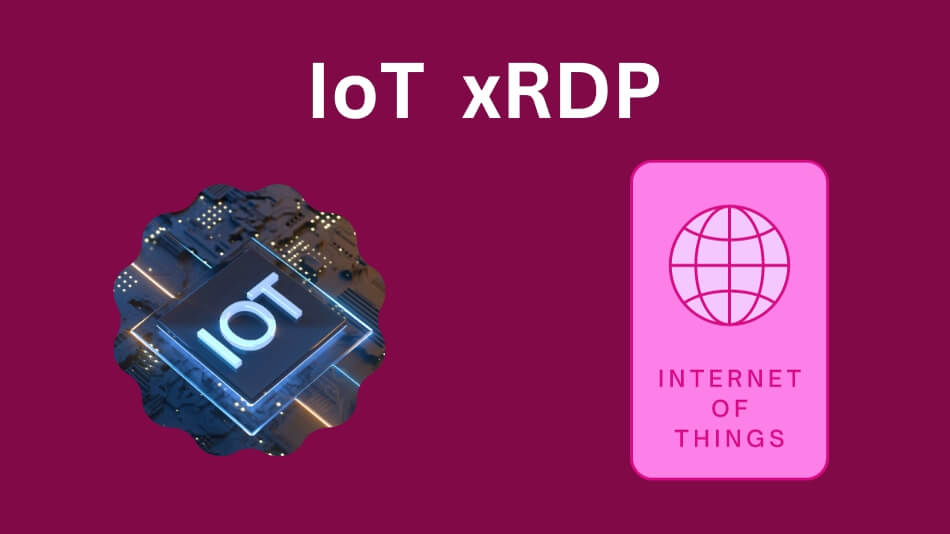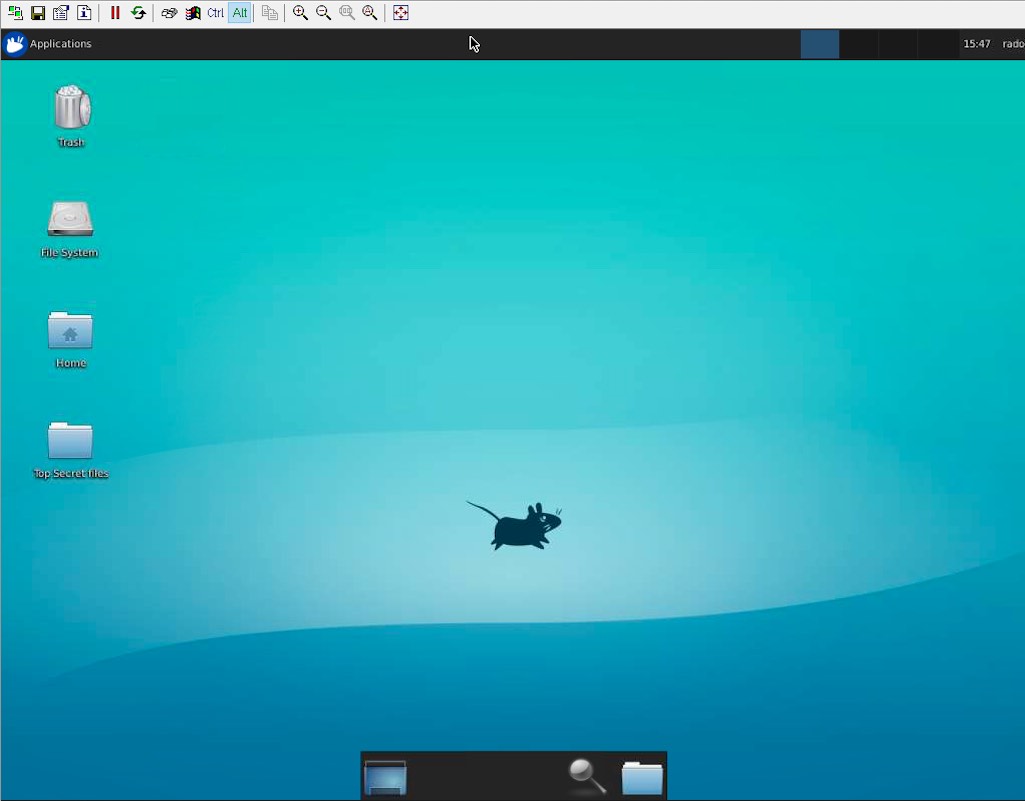Mastering Remote IoT XRDP: A Comprehensive Guide
In the modern digital era, remote IoT XRDP has emerged as a crucial tool for both businesses and individuals. Whether you're managing IoT devices from a distance or accessing your desktop environment remotely, understanding how XRDP integrates with IoT systems can greatly enhance productivity and streamline operations. This guide will walk you step-by-step through the process of setting up and utilizing remote IoT XRDP, providing you with all the knowledge necessary to get started effectively.
As the world becomes increasingly interconnected, the demand for robust remote access solutions continues to rise. IoT (Internet of Things) devices are no exception, often requiring remote management and monitoring. XRDP (X Remote Desktop Protocol) offers a seamless and efficient way to achieve this, allowing users to control their systems and IoT devices remotely with ease.
This tutorial is tailored for anyone seeking to harness the full potential of remote IoT XRDP. Whether you're a beginner or an advanced user, this guide will offer valuable insights and practical steps to help you implement XRDP effectively in your IoT environment, ensuring optimal performance and security.
- Exploring The Life And Legacy Of Jimmy Somerville
- Michael J Fox Debunking Myths Celebrating Legacy And Understanding His Journey
Table of Contents
- Introduction to Remote IoT XRDP
- Understanding XRDP
- Setting Up XRDP on IoT Devices
- Configuring Remote Access
- Security Best Practices
- Troubleshooting Common Issues
- Advanced Features
- Use Cases for Remote IoT XRDP
- Optimizing Performance
- Conclusion and Next Steps
Exploring Remote IoT XRDP
Remote IoT XRDP represents a powerful solution that empowers users to access and manage IoT devices from virtually anywhere. XRDP, an open-source variant of Microsoft's Remote Desktop Protocol (RDP), is particularly suited for Linux-based systems, offering secure and efficient remote access capabilities that make it ideal for IoT applications.
Why XRDP is Ideal for IoT Environments
XRDP brings a multitude of advantages to IoT ecosystems, making it a preferred choice for remote management solutions:
- Seamless integration with Linux-based systems, ensuring compatibility with a wide range of IoT devices.
- Enhanced security features, including encryption and authentication protocols, to safeguard sensitive data and operations.
- Compatibility with a diverse array of devices, enabling versatile deployment across various IoT applications.
- A cost-effective solution for remote management, reducing the need for on-site intervention and minimizing operational expenses.
By adopting XRDP, businesses can significantly enhance their IoT operations, reduce downtime, and improve overall efficiency, ensuring seamless connectivity and management.
- Exploring The Life And Career Of Hannah Waddingham And Her Husband
- Paul Stanley The Multifaceted Rock Icon
Understanding XRDP: An Overview
XRDP is an open-source implementation of the Remote Desktop Protocol (RDP), developed by Microsoft, which allows users to access their desktop environments remotely. It is especially beneficial for Linux-based systems, offering a reliable and robust solution for remote access needs. XRDP enables users to interact with their systems as if they were physically present, bridging the gap between physical and remote environments.
Key Features of XRDP
- Support for Multiple Users: XRDP allows multiple users to access the same system simultaneously, enhancing collaboration and productivity.
- Encryption and Security Protocols: XRDP incorporates advanced encryption methods to secure data transmission, ensuring that sensitive information remains protected during remote sessions.
- Compatibility with Various Clients: XRDP is compatible with a wide range of RDP clients, making it versatile and accessible across different platforms and devices.
- Customizable Configurations: XRDP offers extensive customization options, allowing users to tailor the settings to meet their specific requirements and preferences.
Understanding these core functionalities is essential for effectively deploying XRDP in an IoT environment, ensuring optimal performance and security.
Implementing XRDP on IoT Devices
Setting up XRDP on IoT devices involves a series of steps, including installation, configuration, and thorough testing to ensure seamless operation. Below is a comprehensive guide to help you successfully implement XRDP on your IoT devices:
Step 1: Installing XRDP
Begin by installing XRDP on your IoT device. For most Linux distributions, this can be accomplished using the package manager with the following command:
sudo apt-get install xrdp
Step 2: Configuring XRDP
After installation, configure XRDP to align with your specific requirements. This may involve adjusting settings such as screen resolution, color depth, and security protocols to enhance performance and security.
Step 3: Testing the Connection
Once configured, test the connection to verify that everything is functioning correctly. Use an RDP client to connect to your IoT device and confirm that you can access its desktop environment without any issues.
Configuring Remote Access for XRDP
Configuring remote access is critical for ensuring that XRDP operates effectively in an IoT environment. Below are some essential considerations to keep in mind:
Network Configuration
Ensure that your IoT device is properly connected to the network and that any necessary firewall rules are configured to allow remote access. This step is vital for maintaining secure and uninterrupted connectivity.
Port Forwarding
If your IoT device is located behind a router, you may need to configure port forwarding to enable external connections. XRDP typically operates on port 3389, so ensure that this port is open and accessible.
Authentication
Set up secure authentication mechanisms, such as username and password or two-factor authentication, to protect your IoT devices from unauthorized access and potential security breaches.
Security Best Practices for XRDP
Security is a top priority when dealing with remote access solutions. Here are some best practices to safeguard your IoT devices when using XRDP:
Use Strong Passwords
Implement strong, unique passwords for all users accessing your IoT devices via XRDP. Avoid using common or easily guessable passwords to minimize the risk of unauthorized access.
Enable Encryption
Ensure that all connections are encrypted using secure protocols such as TLS to protect data transmission and maintain confidentiality during remote sessions.
Regularly Update Software
Keep your XRDP software and IoT devices updated with the latest security patches and updates to address vulnerabilities and enhance overall system security.
Troubleshooting Common XRDP Issues
Despite proper setup and configuration, challenges may arise when using XRDP with IoT devices. Below are some common problems and their corresponding solutions:
Connection Issues
If you're unable to establish a connection to your IoT device, verify the network configuration and ensure that the required ports are open and accessible. Additionally, check for any firewall rules that may be blocking the connection.
Performance Problems
Slow performance can often be attributed to network latency or insufficient resources on the IoT device. Optimize your setup by improving network conditions and allocating adequate resources to enhance performance.
Authentication Failures
Ensure that your credentials are accurate and that authentication methods are correctly configured. Double-check the settings and verify that all security protocols are properly implemented.
Exploring Advanced XRDP Features
XRDP offers several advanced features that can significantly enhance its functionality in an IoT environment:
Session Management
Efficiently manage multiple user sessions to ensure smooth operation and optimal resource allocation. This feature is particularly useful in environments where multiple users access the same IoT device simultaneously.
Customization
Customize the XRDP interface to meet the specific needs of your IoT applications. Tailor the settings to align with your operational requirements, improving usability and efficiency.
Integration with Other Tools
Integrate XRDP with other tools and platforms to create a comprehensive IoT management solution. This integration can enhance functionality and streamline operations, providing a seamless user experience.
Real-World Use Cases for Remote IoT XRDP
Remote IoT XRDP has a wide range of applications across various industries, offering innovative solutions to complex challenges:
Industrial Automation
Monitor and control industrial IoT devices from remote locations, enhancing operational efficiency and reducing downtime. This capability is invaluable in manufacturing and production environments, where real-time monitoring and intervention are critical.
Smart Home Systems
Manage smart home devices remotely, providing homeowners with the convenience and peace of mind of controlling their environment from anywhere. This application enhances the user experience and promotes energy efficiency.
Healthcare
Enable healthcare professionals to access medical IoT devices remotely, ensuring timely and accurate patient care. This feature is particularly beneficial in telemedicine and remote healthcare scenarios, where immediate access to critical information is essential.
Optimizing XRDP Performance for IoT Devices
To maximize the effectiveness of your remote IoT XRDP setup, consider the following optimization techniques:
Network Optimization
Optimize your network infrastructure to minimize latency and improve connection speed. Enhance network conditions by upgrading hardware, optimizing routing, and ensuring stable connectivity.
Resource Allocation
Efficiently allocate resources to ensure smooth operation of your IoT devices. Monitor resource usage and adjust settings to optimize performance, ensuring that your devices operate at peak efficiency.
Regular Maintenance
Perform regular maintenance tasks, such as system updates and performance monitoring, to keep your setup running smoothly. Proactive maintenance helps prevent issues and ensures consistent performance over time.
Conclusion and Next Steps
In conclusion, remote IoT XRDP is a powerful tool that can significantly enhance the management and monitoring of IoT devices. By following the steps outlined in this guide, you can effectively implement XRDP in your IoT environment, unlocking its many benefits and improving operational efficiency.
We encourage you to take the following actions to further your understanding and application of XRDP:
- Experiment with XRDP in your IoT setup to explore its capabilities and identify potential improvements.
- Share your experiences and feedback in the comments section to contribute to the community and help others learn from your insights.
- Explore additional resources and tutorials to deepen your knowledge and skills in remote IoT XRDP management.
Thank you for reading, and we hope this guide has been instrumental in your journey to mastering remote IoT XRDP. Your feedback and continued learning will undoubtedly contribute to your success in this evolving field.
Sources:
- The Extraordinary Journey Of Daniel Radcliffe A Testament To Talent And Resilience
- Queen Letizia A Modern Monarch Redefining Tradition

Exploring The Potential Of Remote IoT XRDP Revolutionizing Connectivity

Unveiling The Power Of IoT XRDP Revolutionizing Connectivity

How to Access IoT Remote Desktop Over the